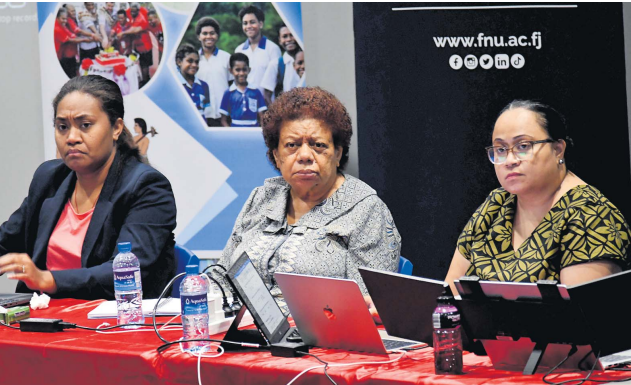The Ministry of Education has tasked education commissioners, who were recently appointed, to review the Education Act and set the direction for a future-ready education sector. This comes with a commitment to delivering a world-class, inclusive and responsive system (Kumar, The Fiji Times, 2/7/2025). It gives hope to diversify or expand the elective offering of the subjects at the tertiary level and may offer an opportunity to do research in their respective diversified subjects. This op-ed gives a glimpse of possible subject offerings that are allied to history; these are called ancillary (allied) disciplines that include a wide range, some of which include numismatics, epigraphy, archaeology, chronology, graphology, sigillography, diplomatic and palaeography. These subjects are allied and interrelated to history, which becomes a pivotal tool for historical research and interpretation. These disciplines are specialised knowledge that help historians to reconstruct the past based on available facts, with objectivity and established generalisation. This also equips us to make a comparative study.
IN 1961, E.H.Carr’s What is History? elucidates history as “a continuous process of interaction between the historian and his facts, an unending dialogue between the present and the past”. Thus, the allied disciplines are useful towards the work of historians’ craft.
First of all, the Chronology is a highly useful means to arrange the historical events in order of their occurrence/timeframe; it is a useful ploy to establish relationships between the sequence of events.
Without chronology, the historical meaning is lost, while historians are trying to establish the causation of events.
This also establishes the time and space of the event, which helps to analyse and interpret the events. Chronology is meaningful in identifying the gaps between the historical events and the fixation of historical dates, highlighting the timeline of controversial events.
Graphology refers to the study of handwriting with the intent of psychological analysis or making an estimate about the character by examining the handwriting.
The researchers claim that there is a strong relationship between the handwriting of a person and their personality. In order to make an objective assessment of author of the writings, the graphologist should be mindful of the author’s place, time, position, health, mood and form of writing.
This is a useful ploy to understand a person’s psyche and mental status during the time of writing, their age, gender and temperament and the character of the person.
Sigillography is the study of seals, or sometimes refers to a signature (in its original word). This helps to determine the age, content and historicity of the seal.
The material that constitutes the seal is also an important factor in determining the historical timeframe and age.
Sometimes seals are also used to give authenticity to the document. The kind of calligraphy on the seal depicts valuable information about the historical period.
Another similar discipline is epigraphy, or the study of inscriptions or epigraphs.
These writings are engraved or inscribed on a kind of durable material, such as pottery, clay, stone, metal, etc.
This helps to reconstruct the past by understanding the inscriptions with their historical significance. Examples include commemorative inscriptions, legal texts, religious inscriptions, donative records or Graffiti.
These act as primary historical sources, helping to identify the dates of historical events and reconstruct the historical narratives.
The next allied discipline is palaeography, which studies the old/ancient handwriting systems and scripts, that assist historians to read, understand and historically narrate past events with objectivity. How humans have drafted the mode of writing in different periods and places.
Paleographers show how each letter has changed throughout time and space, while interpreting antique inscriptions and manuscripts to define the period of their origin and the manner in which these writings have evolved.
It is a challenging job when there are many languages and dialects that have contributed to historical writings.
This field is interesting and rewarding, where the paleographers fix the practical puzzles of different writings to give meaning to the ancient words. In the digital world, the technology also assists these craftsmen in deciphering the meaning of unresolved ancient writings.
The next auxiliary discipline is diplomatic/diplomatics that focuses on critical analysis and interpretation of historical documents, especially official records, legal treaties, legal charters and other official forms of communication produced by the official authorities and institutions.
The objective of diplomatic is to determine the authenticity of the document, interpret its legal implications and structure, and lastly, help in comprehending the historical context and objective to produce them. They help to verify the historical sources and construct a close-to-the-truth narrative.
Numismatics refers to the study of coins, tokens, currency or medals. The currency of every civilization/empire helps to reconstruct the political, economic, social and cultural understanding of the past.
This study is useful in historical analysis and dating historical events, which also examines the artistic design of the coins, studies the metallurgy, and understands the dates, inscriptions and symbols on the currency. It is helpful to understand the economic history, religious insights, political history and technology of any era.
Archaeology studies the material remains of human life and activities like artefacts, architecture, pottery, tools, monuments, etc. This is beneficial to the construction of human history when there is a scarcity of written records.
This equips us to understand ancient societies through their leftover historical footprints/evidence, reconstruct cultural practices, settlement patterns, technological development and gaps between the historical periods.
Anthropology, related to the study of humans, involves a comparative and systematic study of humans.
Anthropology can be subdivided into different branches like cultural, archaeological, biological, linguistic and applied.
It is useful to understand prehistoric cultures, their contextualisation and comparative analysis. It also takes into consideration the oral tradition and indigenous knowledge.
Philology, or the study of languages in both their past and present conditions, is through the study of written texts. It studies the language’s structure, meaning and development.
Conclusion
Offering these auxiliary disciplines related to history would broaden the career options and contribute to preserving and critically examining the historical facts to give an objective understanding of the past.



